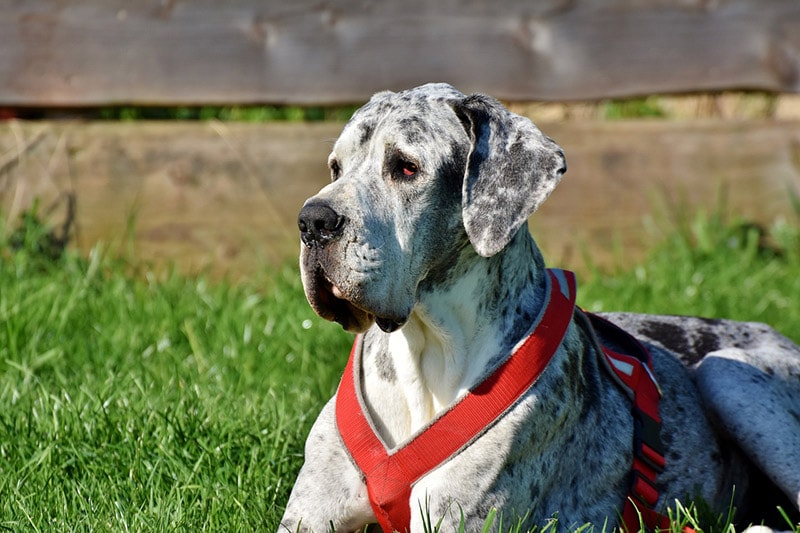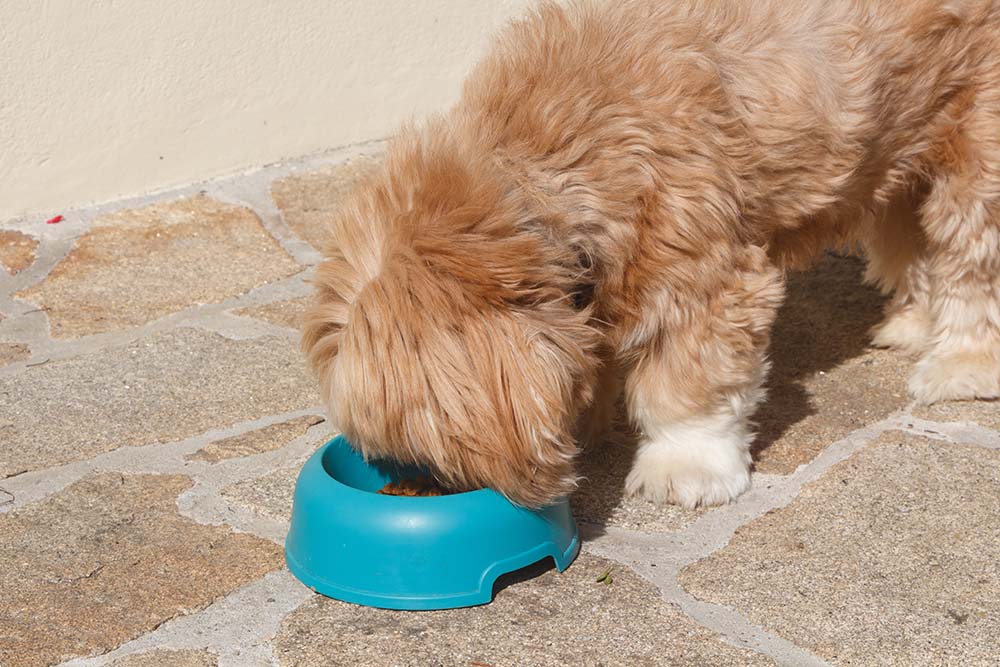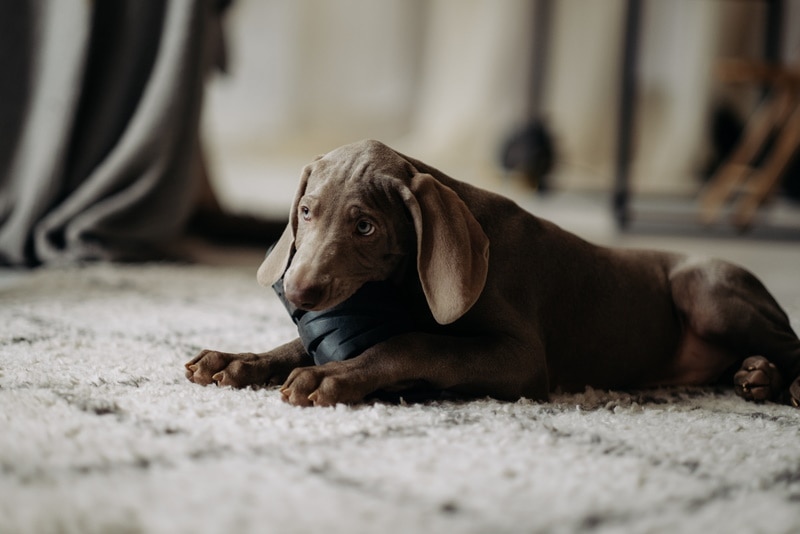Lhasa Apso Vs Havanese: How Are They Different? (With Pictures)
By Lorre Luther
Updated on
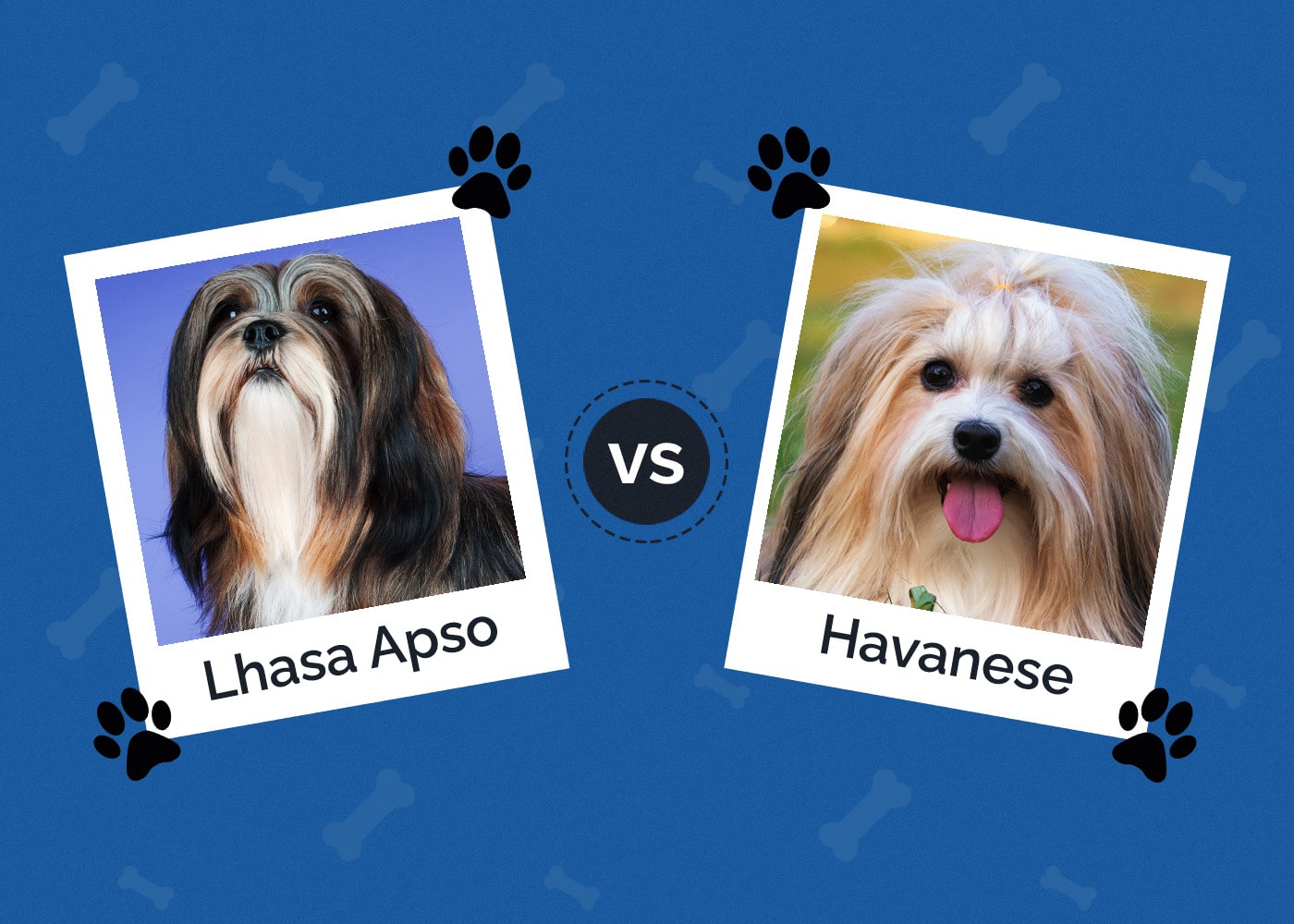
Both Lhasa Apso and Havanese dogs have gorgeous long coats, but they’re different breeds. Lhasa Apsos are one of the oldest breeds in existence. They’re native to the Tibetan highlands, and they’ve been around for thousands of years. Lhasa Apso dogs were often used as monastery watchdogs. Havanese dogs are related to breeds like the Maltese and Bichon Frise. The breed was developed in Cuba from dogs brought to the island by European sailors during the 1600s. Havanese dogs were bred to be sweet companions.
Lhasa Apsos are larger than Havanese dogs. They have straight hair, while Havanese dogs usually have wavy locks. However, both require quite a bit of grooming to look their best. The breeds also have different temperaments, as Lhasa Apsos were bred to have guarding tendencies, while Havanese dogs were bred to be companion animals. Lhasa Apsos can be reserved around strangers, while Havanese dogs are often perfectly happy to engage with new people.
Visual Differences
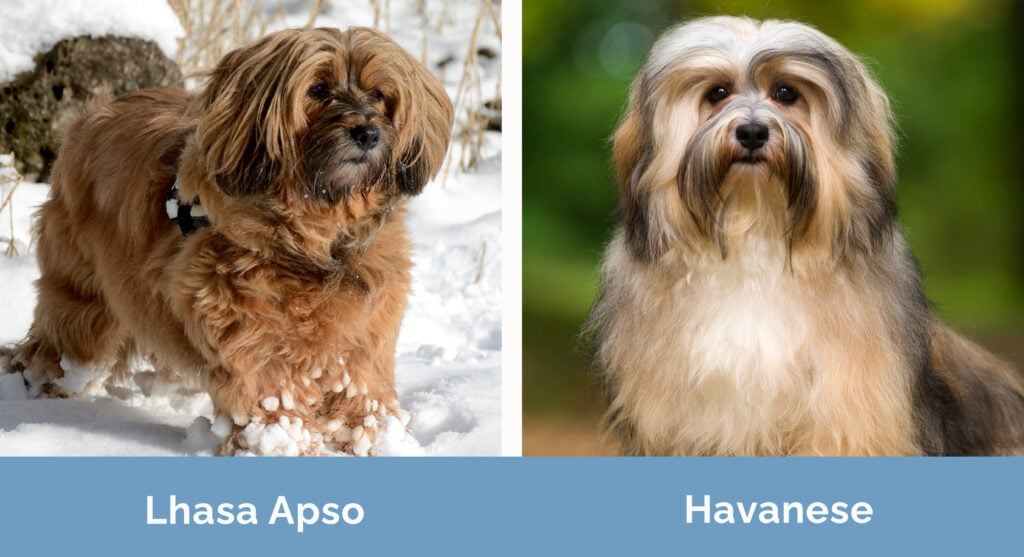
At a Glance
- Average height (adult): 10–11 inches
- Average weight (adult): 12–18 pounds
- Lifespan: 12–15 years
- Exercise: 1 hour a day
- Grooming needs: Moderate to high
- Family-friendly: Sometimes
- Other pet-friendly: Sometimes
- Trainability: Intelligent but stubborn
- Average height (adult): 8 ½ –11 ½ inches
- Average weight (adult): 7–13 pounds
- Lifespan: 14–16 years
- Exercise: 30 minutes–1 hour a day
- Grooming needs: Moderate to high
- Family-friendly: Yes
- Other pet-friendly: Yes
- Trainability: Extremely trainable and eager to learn
Lhasa Apso Overview
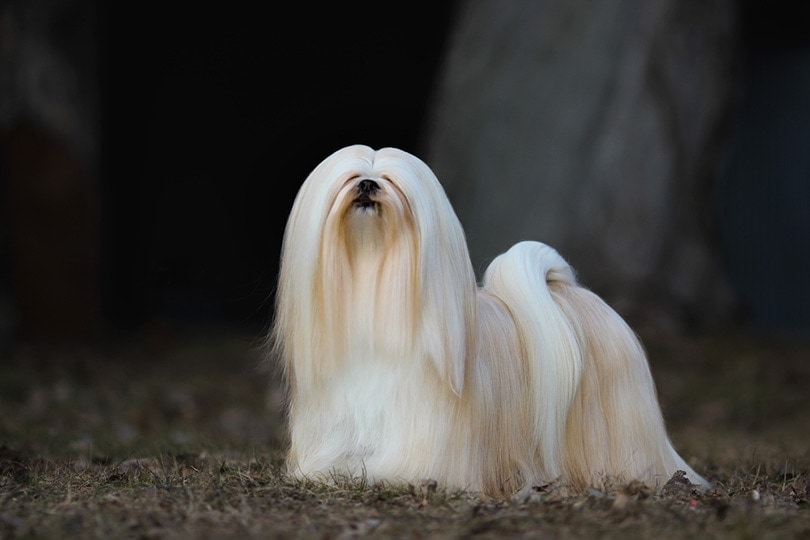
Lhasa Apsos are friendly, intelligent dogs easily recognizable by their gorgeous long straight hair. They come in several colors, including black, cream, red, and white. Their beautiful, full coats fall to the floor and require a fair amount of maintenance.
Personality / Character
Lhasa Apsos are incredibly friendly with loved ones and often become playful when relaxing at home. Because of their heritage as guard dogs, they can be reserved around strangers but usually warm up to new people over time. They’re not always great with children or other pets, as they can sometimes react aggressively when annoyed.
They have strong prey drives and are prone to chasing cats and other smaller creatures. Without solid early training and consistent communication of behavioral expectations, Lhasa Apsos can become stubborn.
Training
Lhasa Apsos are incredibly smart but can be stubborn and have a reputation for being difficult to train. The breed does best with positive training techniques, as punishment sometimes results in aggression. Good early training and socialization are essential. Puppies can start learning the basics, such as sit, come, and stop, when they’re 8 weeks old. Early training often makes the learning process easier when a foundation for learning has been established during puppyhood.
Health & Care
Lhasa Apsos don’t have any significant nutritional requirements, but they usually do best with high-quality commercial formulations packed full of healthy protein and vegetables. The breed is generally healthy, although they’re at heightened risk of developing some types of kidney and eye conditions.
Lhasa Apsos require a fair amount of grooming to stay looking their best. Most require multiple weekly brushings to prevent their long silky hair from tangling and developing mats. Some owners opt for shorter cuts that require less daily attention. Baths every other week help keep their skin healthy and coats shiny.
Canine-friendly shampoos and conditioners are formulated to nourish dogs’ skin and don’t contain ingredients that can be harmful to dogs. Most groomers recommend drying and brushing Lhasa Apsos’ fur after bathing, as wet hair tends to mat.
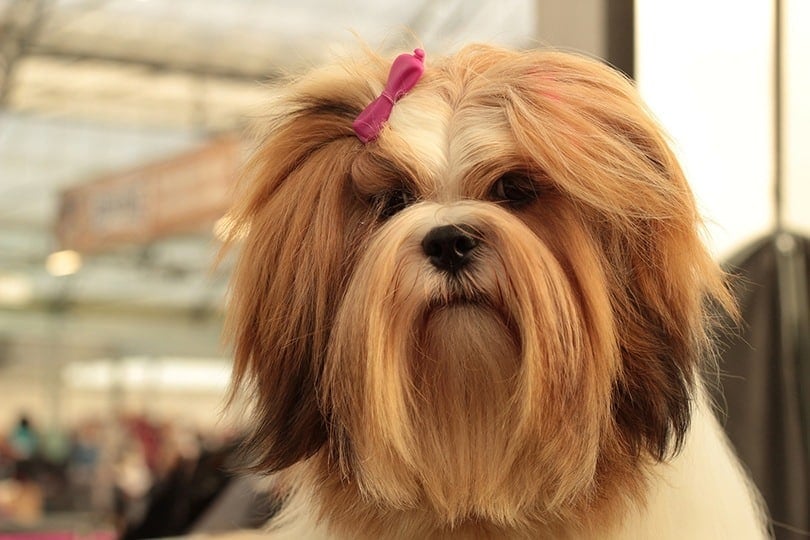
Suitable for:
Lhasa Apsos are smart, outgoing dogs that make wonderful companions for those with the time to invest in solid, consistent training. They’re not the most patient dogs and often become annoyed with children and other pets. Lhasa Apsos are trainable but have a reputation for being a bit difficult. Most benefit from early socialization and obedience training. They don’t require much exercise; daily walks and playtime are fine. While they’re small enough to live in apartments, they frequently bark and race around to release pent-up energy.
Havanese Dog Overview
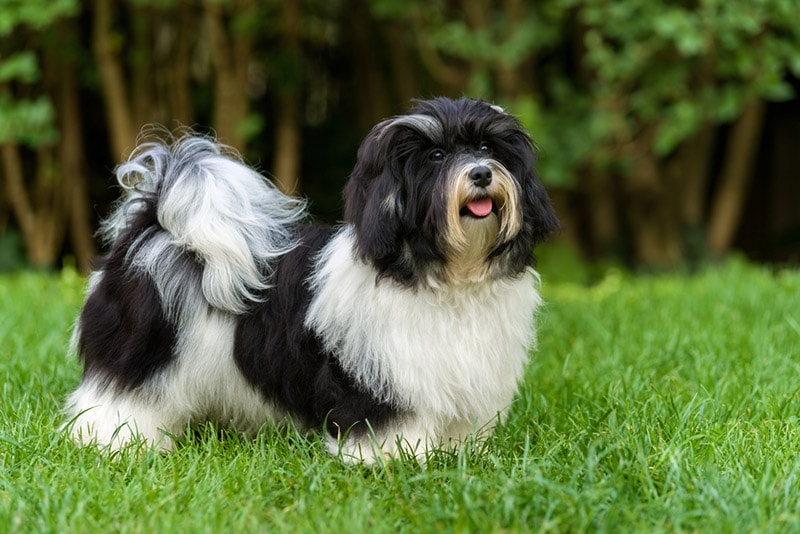
Havanese dogs are sweet, loving companions that bond deeply with humans. They’re bred to be lapdogs and typically become attached to their human companions. They’re fantastic apartment dogs since they don’t bark much or run about to release excess energy. Most are incredibly easy to train and don’t have terribly high exercise needs. Because they’re so people-oriented, Havanese dogs often do best in homes where they only have to stay by themselves for short periods.
Personality / Character
Havanese dogs were bred as companion animals, so they’re incredibly loyal, affectionate, and people-oriented. Most love being around their favorite humans, canines, and felines. While they enjoy playing and going for walks, they’re not an active breed, making them great apartment dweller companions. They also aren’t known as frequent barkers.
Exercise
Havanese dogs don’t require much exercise to stay fit; most need around 30 to 60 minutes of daily physical activity. A few walks and playtime are usually more than enough to keep them happy. Consider increasing your pet’s activity levels if they exhibit signs of anxiety, such as appetite changes or destructive behavior. Exercise often reduces canine anxiety levels.
Training
Havanese dogs are easy to train, thanks to their people-pleasing natures. Positive training methods are necessary with these sensitive dogs, as harsh tones and sharp reprimands often increase canine anxiety, which is a condition Havanese dogs are prone to developing. Reward-based training usually works amazingly well with Havanese dogs. Just remember to include any treats you give your pet during “training” when tallying up their daily caloric intake.
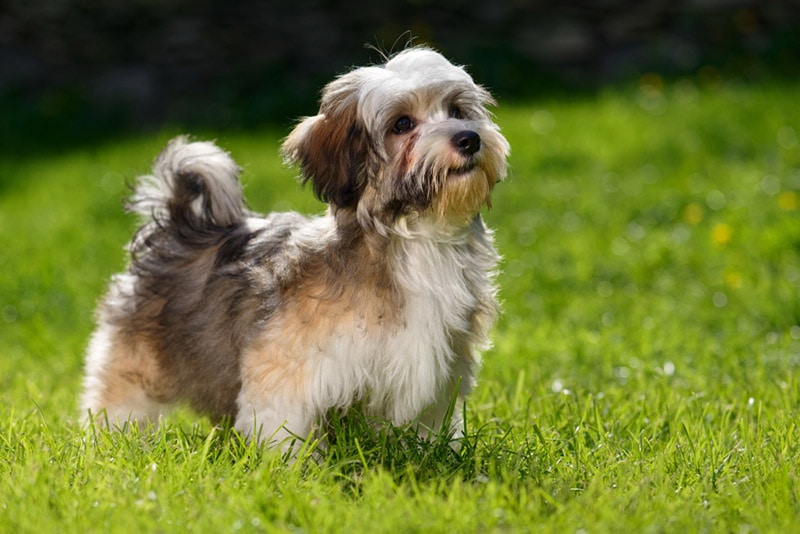
Health & Care
Havanese dogs often benefit from a diet designed for toy breeds, as they have slightly different nutritional needs than larger pets. They’re usually healthy and often live well into their late teens. The Havanese is susceptible to a few conditions, including progressive retinal atrophy and patellar luxation.
Havanese dogs have long wavy hair that requires daily grooming. Short haircuts can substantially reduce the time spent brushing the dog’s coat. Their faces require daily cleaning to prevent the development of tear stains, and most benefit from baths every few weeks to stay nice and clean. Their ears also need regular ear cleaning and wax removal. Like all dogs, they require at-home dental care and nail clipping.
Suitable for:
Havanese dogs make lovely family pets; they usually get along well with children, dogs, and even cats. These people-pleasing dogs are easy to train, but like all dogs, they benefit from obedience training. They’re not frequent barkers, making them great apartment dogs. They’re quite sensitive and prone to developing separation anxiety, so they often do best with human companions who spend lots of time at home. These adaptable, friendly dogs are just right for homes where they’ll get lots of loving attention.
Which Breed Is Right for You?
While both breeds have gorgeous long coats, they have different temperaments and care requirements. Lhasa Apsos are larger than Havanese dogs and more reserved around new people, thanks to their guard dog heritage. They can also be intolerant of children and other pets unless they’re well-socialized and sufficiently trained.
Lhasa Apsos have long, silky hair that requires multiple weekly brushings. They also need baths every few weeks but are easier to groom than Havanese dogs. However, both dogs require regular grooming and trips to the doggy salon to stay looking good.
Havanese dogs are incredibly easy to train, as they’re very people-oriented. Lhasa Apsos can be stubborn, making training a bit more challenging. Starting early often eases the process and increases the chances of success with stubborn dogs. Families with young children are better suited for Havanese dogs, and those with more experience training are better with Lhasa Apsos.
See Also:
- Coton De Tulear vs Havanese – How Are They Different?
- Bichon Frise vs. Havanese: How Are They Different? (With Pictures)
Featured Image Credit: (L) otsphoto, Shutterstock | (R) Sandra Huber, Shutterstock




